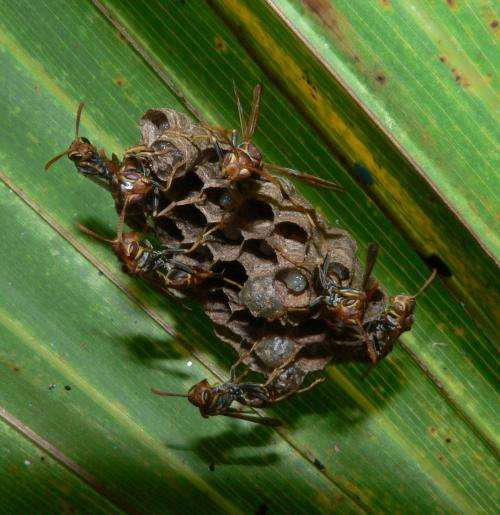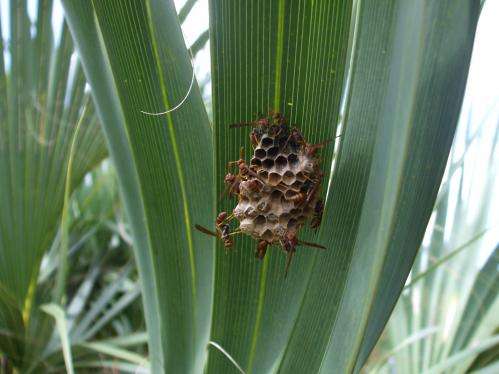Social wasps accepted more frequently into unfamiliar colonies when both the individual and the group are young

Ants, wasps and humans live in highly complex societies. Our organizations share some basic features of group life, like individuals trying to find the balance between cooperation and conflict. Understanding what factors are important for these communities to develop gives us key insights into the evolution of sociality in animals.
A new study, by University of Miami (UM) biologist Floria Mora-Kepfer Uy, looks at colonies of social wasps and explores the acceptance of individuals not related to each other, in a highly organized and adaptable society. The findings show that the age of the individual, and of the colony, defines the costs and benefits of accepting new members into a group.
The study uses the social wasp Mischocyttarus mexicanus. "These colonies are composed exclusively of females and they make decisions on the colony composition depending on the social and ecological pressures they are exposed to," says Mora-Kepfer Uy, a lecturer in the College of Arts & Sciences.
Nest-switching is common during the initial period of colony establishment, when individual wasps try to join other colonies and existing members have to decide whether to accept or reject new comers. The wasps recognize nestmates from non-nestmates using chemical signals that are specific to each colony.

"If non-nestmates are accepted, they may either become a worker in the colony or instead attempt to take over the reproductive-dominant role, steal, or cannibalize the colony's offspring," says Mora-Kepfer Uy. "Females are, therefore, trying to balance the potential benefits of having additional help with the possible costs of new members acting selfishly."
According to the study, young non-nestmates were accepted more often than old ones, and they were more frequently accepted into young colonies, than in late colonies. It might favor the colony to accept non-nestmates as subordinate workers during the period of colony establishment. The findings also show that late colonies more frequently rejected both young and old non-nestmates, suggesting that risk of acceptance may be too high at this stage.
"The findings imply that the effect of the social context and immediate needs of a group mediate social acceptance in these flexible societies," says Mora-Kepfer Uy. "These factors may help us understand changes in the composition of other complex animals groups, including human societies,"
More information: The study is titled "Context-dependent acceptance of non-nestmates in a primitively eusocial insect." The findings are published in the journal Behavioral Ecology and Sociobiology
Journal information: Behavioral Ecology and Sociobiology
Provided by University of Miami


















